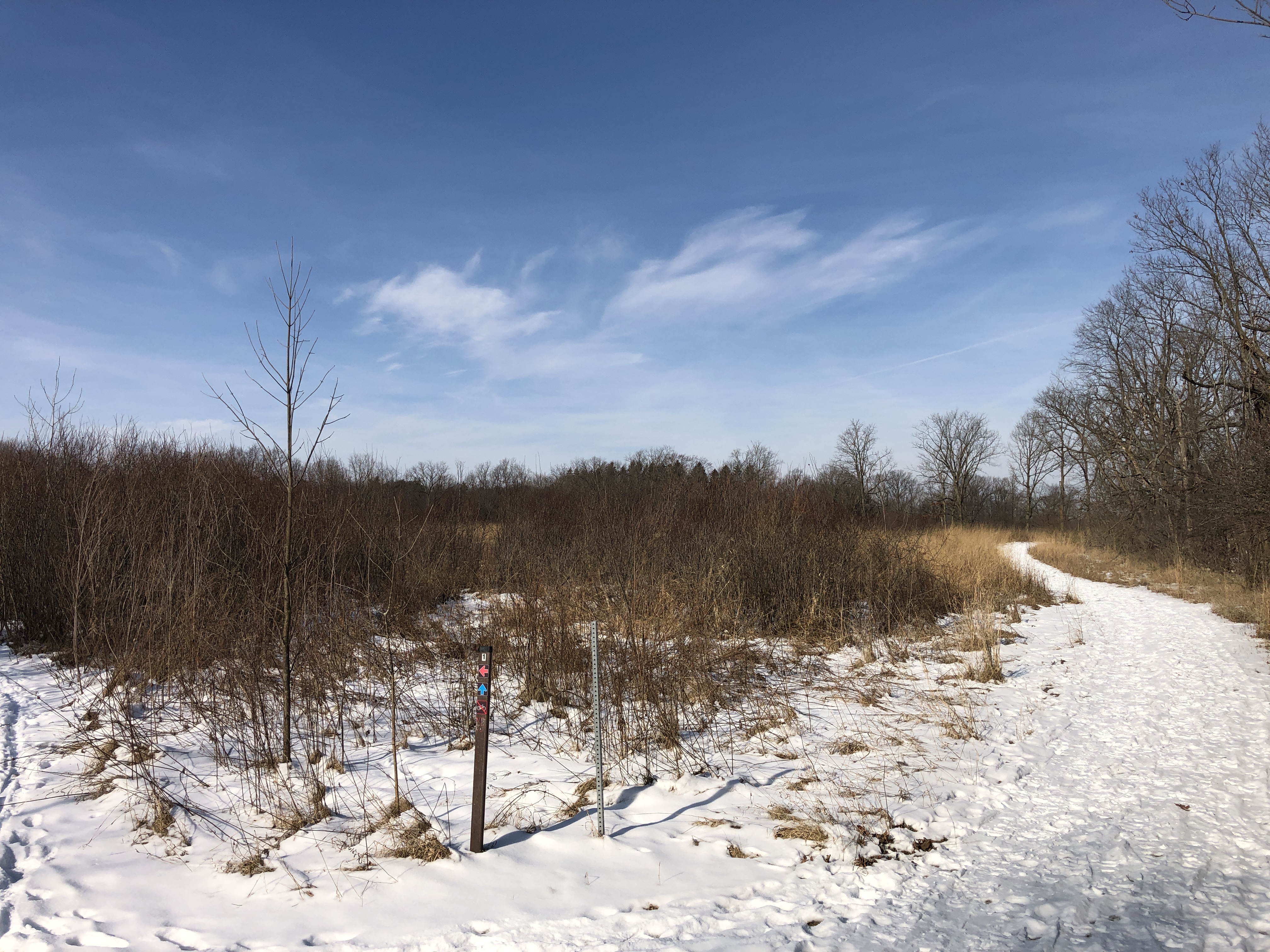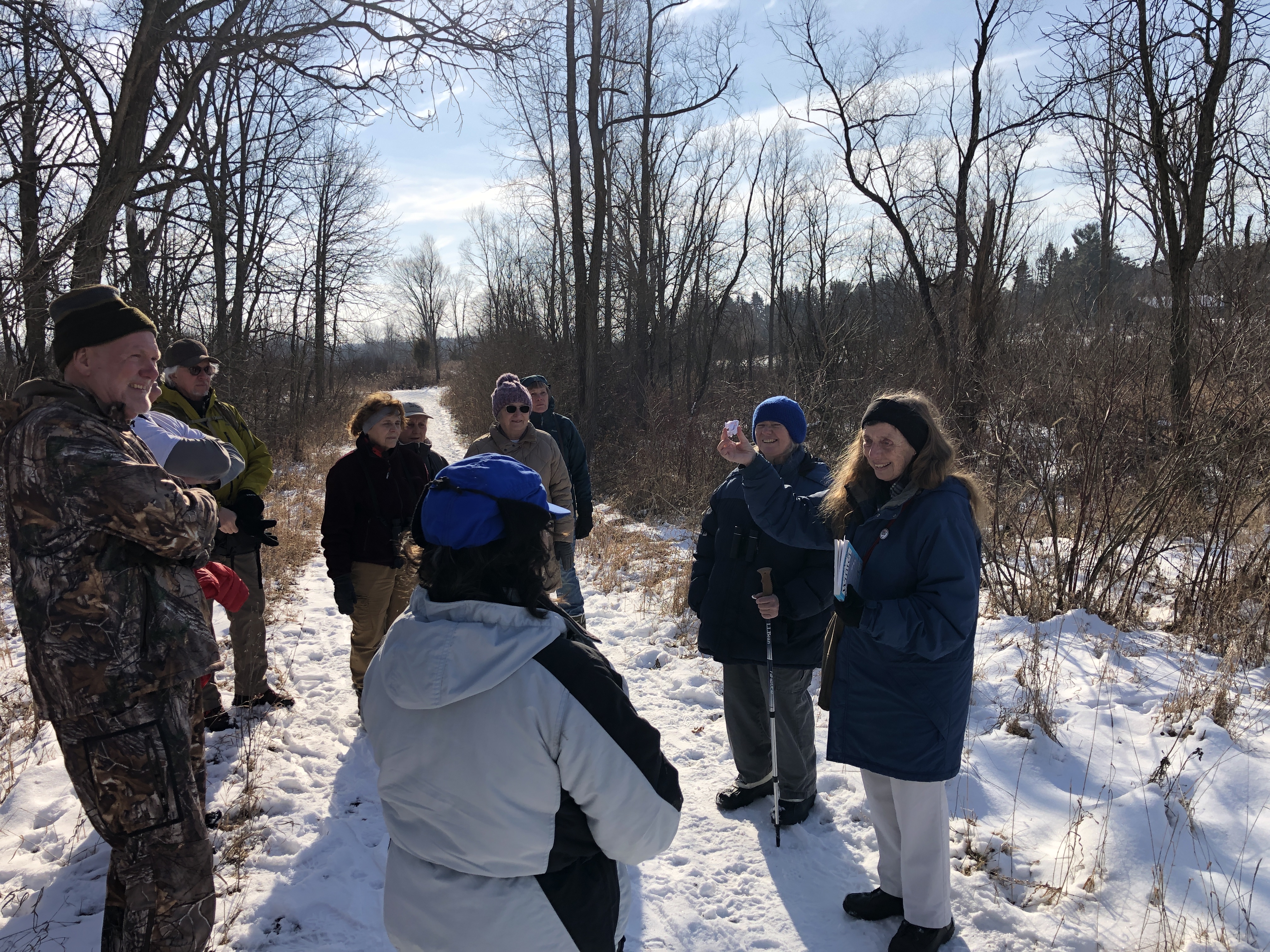It was agreed that our winter walk rescheduled from last Tuesday (12F) to today (27F to 41F) was a good idea. It was sunny and clear with a mild breeze. The Leonard Preserve is one of the Washtenaw County Natural Area Preservation Program properties. This was our first visit to this venue but we have visited other NAPP properties including Spike Avis and West Lake Preserve in the past.

(Steve Jerant)
Joann Ballbach led this winter tour with her usual delightful mix of science, story telling, and folklore. She went over the basics from why its winter to the molecular structure of a snowflake. As usual with Joann, we concentrated on plant life but also checked out varieties of tracks in the snow on the trail and on the frozen river.

(Steve Jerant)
One of the very visible natural features in winter are galls. These are deformities on plants where insects or other parasites create a structure on the host that can look like a bloated section of stem, a bud, or in the case of our mystery gall today, a dried flower. There were many goldenrod galls and willow galls. Then we found a poplar tree full of galls but they were unfamiliar to all of us.
 (Steve Jerant)
(Steve Jerant)
Robert did the research after the walk and found information written by Dahlem's own past Education Director, Ellen Rathbone.
from the Adirondack Almanac
by Ellen Rathbone
...it is indeed a cottonwood gall of a type made by cottonwood gall mites (Eriophyes parapopuli), aka: poplar bud gall mites. These mites, which are so tiny that it would take five, lined up end to end, to stretch across a 12-pt. period, can be found on other members of the poplar family, too, not just cottonwoods. One of the things that I discovered in my research that I thought was rather interesting is that these mites, unlike the overwhelming majority of mites and spiders, have only four legs. Not four pairs of legs (spiders and mites), but four legs…period. That’s just wrong. Despite their small size, and obvious lack of appendages, these miniscule pests travel very well, thank you. How do they get around? By wind, water, insects, birds and yes, even people. They are extremely fertile, producing up to eight generations in a single year (thank goodness they only live about a month as adults).

(Robert Ayote)
Oh, we also were birding when not looking at plants. Below is the species list
eBird checklist
21 Mourning Dove
2 Red-tailed Hawk
3 Red-bellied Woodpecker
2 Downy Woodpecker
1 Northern Flicker
5 Blue Jay
6 American Crow
3 Black-capped Chickadee
1 Tufted Titmouse
1 White-breasted Nuthatch
4 European Starling
1 American Tree Sparrow
2 Northern Cardinal
Number of Taxa: 13